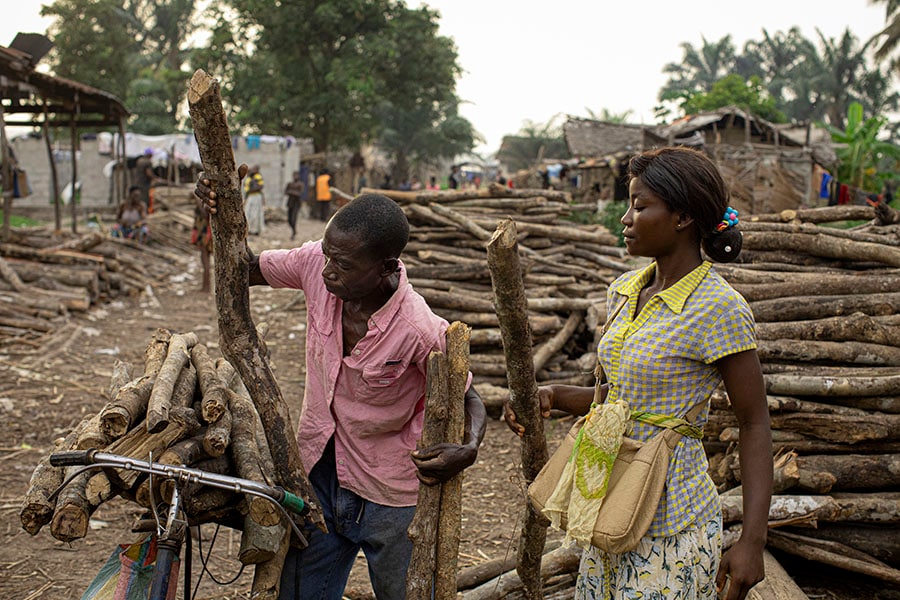
How demand for twigs is bringing down a rainforest
The logging industry in Congo uproots precious old-growth trees for use in furniture and home construction, then, entire swaths of forest are burned to make way for farming. But the raiding of the forest by regular people in search of cooking materials is surprisingly destructive as well
 A kiln for making charcoal, widely used for cooking, along a Congo River tributary in Mbandaka, Democratic Republic of Congo, on March 16, 2022. In the Congo River Basin, a rainforest that rivals the Amazon in importance, people who collect bundles of wood to make charcoal play a surprisingly large role in deforestation. (Ashley Gilbertson/The New York Times)
A kiln for making charcoal, widely used for cooking, along a Congo River tributary in Mbandaka, Democratic Republic of Congo, on March 16, 2022. In the Congo River Basin, a rainforest that rivals the Amazon in importance, people who collect bundles of wood to make charcoal play a surprisingly large role in deforestation. (Ashley Gilbertson/The New York Times)
Every day late in the afternoon, women lugging bags of sticks on their back spill out of the brush onto a highway just south of the equator. Men pass on motorbikes, one after another, hauling bags of charcoal. Boys trudge along with a single log slung over their shoulders, as if they are toting a baguette.
Deep in the trees, Debay Ipalensenda puts down his ax and joins this forest parade, which is slowly destroying one of the world’s most important landscapes, all to cook a meal.
The scene plays out not only on this stretch of road in Congo but all across the 1.3 million square miles of rainforest across the Congo Basin, home of the second-largest old-growth rainforest in the world.
It is a ritual that in its ubiquity is a tragedy. And not just for generations of people who have no means to prepare food other than to cook it over open fires, but also for the entire planet as the carbon-absorbing forests so critical for slowing global warming are taken apart tree by tree and in some cases branch by branch.
The logging industry in Congo uproots precious old-growth trees for use in furniture and home construction, contributing to the destruction of forests — particularly when not regulated properly. On top of that, entire swaths of forest are burned to make way for farming.
©2019 New York Times News Service










